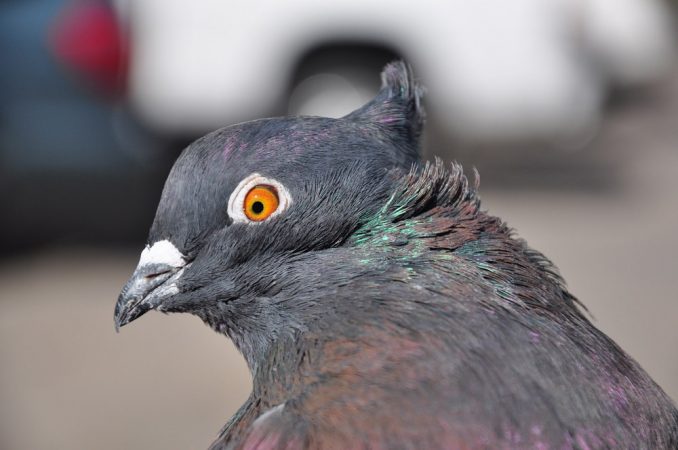Fancy feather gene
A tweak in a single pigeon gene causes a distinct feather formation

What a difference a gene makes! For pigeons, one gene can make or break the appearance of fancy feathers.
Many pigeons have crests or collars, tufts of feathers on the head or neck that appear to go the wrong way. They point up toward the head instead of down toward the tail. This funny feature decorates many different pigeon breeds, but all of those birds have one thing in common: A genetic alteration. In January, scientists reported they had pinpointed the altered gene responsible for the feathery twist.
A gene is a tiny segment of DNA. DNA’s long, ladder-like molecule is found inside nearly every cell of every organism. Genes instruct a cell on how to function. Within individuals of the same species, most genes will be the same. But some genes may show slight differences, called mutations. In humans, blue eyes are the result of a genetic mutation. Mutations can develop naturally (think of some as a copying mistake) and then will be passed down from parents to their offspring.
Previous studies have suggested that a single genetic mutation is responsible for the funny feathers. But no one had found it. So biologist Michael Shapiro of the University of Utah in Salt Lake City and his coworkers went scouting for it. His team first gathered DNA from the cells of rock pigeons with the wrong-way feathers. Then the researchers gathered DNA from rock pigeons without crests or collars.
The researchers compared the DNA from both types of birds. They found a mutation of a single gene, called EphB2, in pigeons with crests or collars. Birds with straight feathers lacked the mutation. So it alone seems to explain the strange plumage in some pigeons.
“This mutation that we found appears to be the on/off switch for crest development,” Shapiro told Science News.
The researchers say the mutation probably arose naturally a long time ago in one breed of rock pigeon. Later, it likely spread to other breeds as crested birds bred with those without crests. (Like dogs, different breeds of rock pigeons can look very different from one another, but all belong to the same species.)
The new finding suggests major physical differences in other species may also trace to one or more tweaked genes, says Scott Edwards. This Harvard University biologist, who specializes in birds, did not participate in the new study.
Other species of birds also have crests, but Shapiro’s team doesn’t yet know if they are due to the same mutation.
Power Words
gene A sequence of DNA that determines a particular characteristic in an organism. Genes are passed from parents to children, and genes contain the instructions for building proteins.
genetic mutation A change in a gene.
DNA, or deoxyribonucleic acid A long, spiral-shaped molecule that carries genetic information. DNA is inside nearly every cell of an organism. Chromosomes are made of DNA.
cell The smallest structural and functional unit of an organism, typically too small to see with the naked eye.
species A group of organisms consisting of similar individuals.







